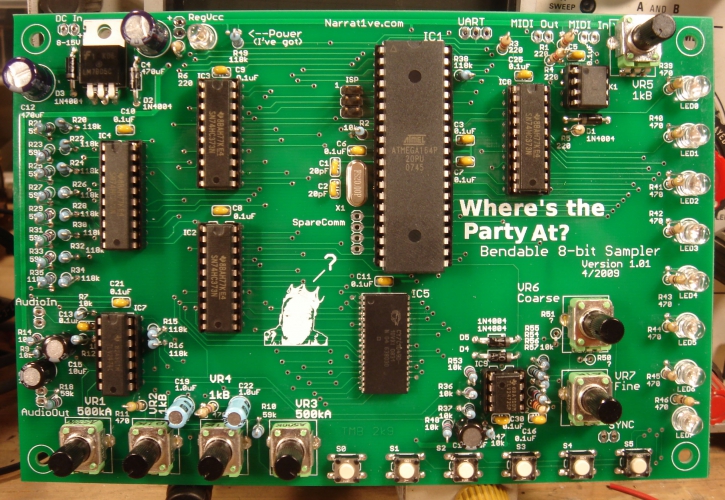Join us at Machine Project for a Sunday afternoon demonstration and lecture by Todd Bailey about DIY Digital Sampler Design.
(Todd will have sampler kits available for purchase for $75, for anyone who wants to stick around after the lecture and get started on assembling their own.)
Lecture Description:
Circuitbenders and audiophiles alike have dedicated buckets of time, sweat, and solder to the characterization and creation of whatever it is they believe makes digitally stored music sound “good”. This has led to some extremely focused work, however, it has also led to weird fetishistic device-worship (see: the Casio SK-1 or the world of tube DACs). In order to get back to the fundamentals, Todd decided to design a sampler which intentionally incorporated many of the audio imperfections which give samplers some of their more noteworthy characteristics. The project started out as a pedagogical tool for a talk he gave at the Bent Festival in 2008 — he used it to demonstrate some principles of digital sampling (bit depth, sample rate, dac architectures, memory types, etc) and drew parallels between his little sampler and the likes of commercial products like the SK-1, DL4, or MPC2000. It was, in part, also an invitation to the audience to explore their own new design paths rather than keep re-working old toys.
ABOUT THE SAMPLER:
Where’s the Party At?
Interestingly, the past year saw the sampler Todd built (christened “Where’s the Party At?”) go through its own lurching set of fetishizations as it made its way from Proof-Of-Concept board to a full-featured open-source DIY kit which explicitly took advantage of and selectively played up the crusties he had sought to characterize. WTPA went from a simple looper to a multi-timbral, multi-bank, MIDI-enabled, 1-to-8 bit sampler with multiple clock sources, tons of selectable “errors” to introduce into the signal path, and any number of bad hip-hop jokes in the silkscreen. Furthermore, WTPA was designed with the circuitbender in mind (it is repairable, brings clocks off-chip whenever possible, and has impedances scaled to make “body contacts” easy to realize) and is designed to sneak some “design ideas” into good natured tinkering and less-good-natured noise-rock crust.
Website:
http://www.narrat1ve.com/
